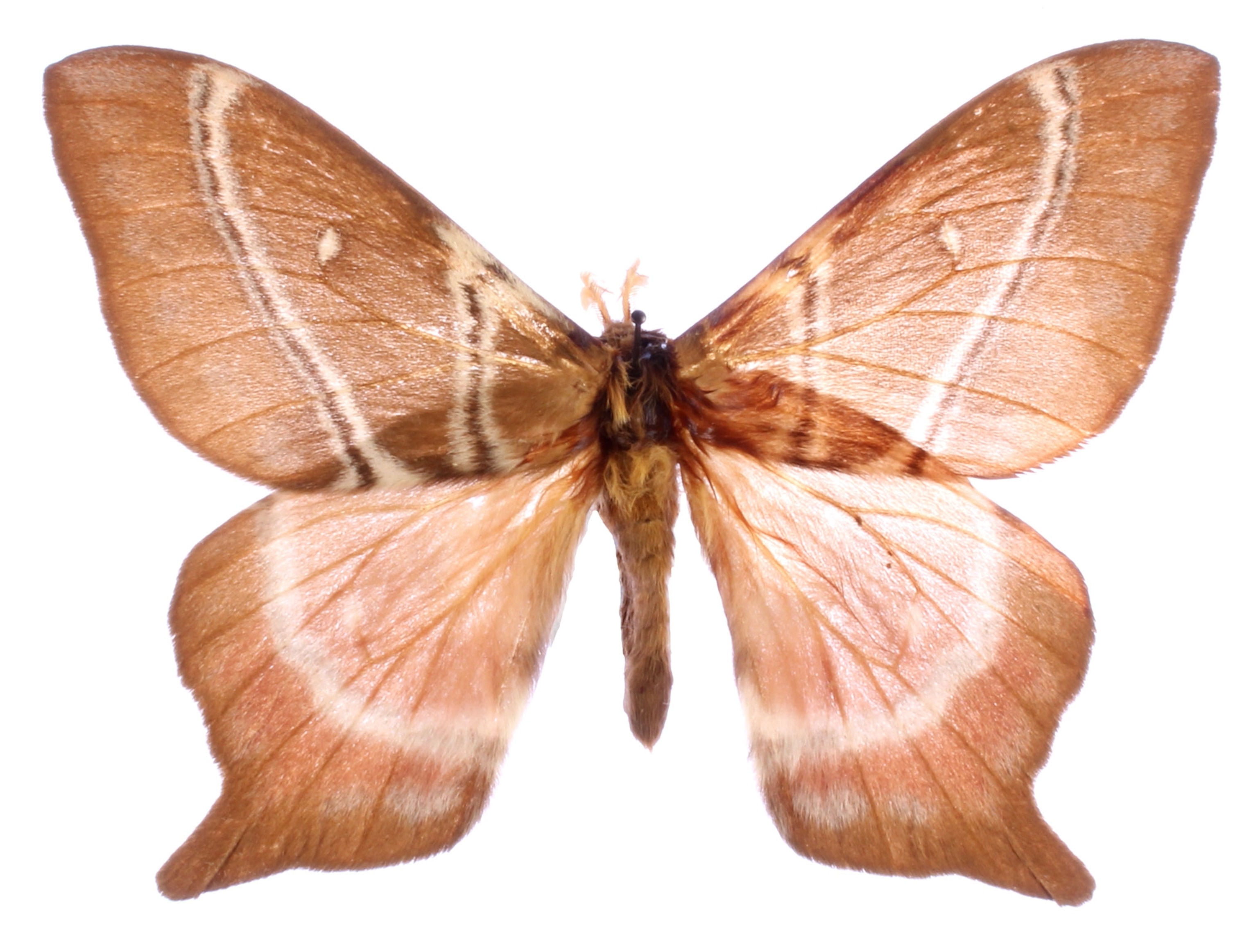
How Long Wings Help Huge Moths Evade Bat Attacks
Scientists have determined that the longer a moth’s hind wings and tails are, the better chances the insects have of surviving a bat attack.
When an African moon moth unfurls its great, green wings, it becomes nearly as large as a ping-pong paddle. The creatures are gorgeous to behold, and with a juicy, nutrient-dense body sandwiched between gigantic wings, they’re a prized treat for a hungry bat.
What’s more, the moths’ hind wings sport a pair of long, dangly tails that look like they’d be perfect for snatching.
Yet even when bats use their superpower-like echolocation to zero in on the moths, the flying mammals miss more often than not. What gives?

According to a study published Wednesday in the journal Science Advances, the moon moths’ tails aren’t a liability—they’re an asset for deflecting the sound waves bats use to echolocate, or find prey. (See photos of some the world's most amazing—and misunderstood—moths.)
“It would seem that the bats are treating these moths with tails as though there are two targets that they can aim at,” says Juliette Rubin, a sensory ecologist at Boise State University’s Barber Lab and a lead author of the new study.
The best part? Both of these targets aim the bats away from the moth’s vulnerable center.
To understand how this works, Rubin and her coauthors pitted big brown bats against various species of moths with differently sized and shaped tails, some of which they artificially shortened or elongated for the purposes of the study. And the team discovered a fascinating trend.
“As hind wing length and tails get longer, moths increasingly escape their bat predators,” says Rubin, who is also a National Geographic Society grantee.
Die Another Day
A few extra inches of tail might not seem like much of a boon, especially considering some of the other anti-bat adaptations out there. Greater wax moths, for instance, have evolved highly sensitive hearing that can detect the shrieks of a bat as it approaches. And the hawk moths of Borneo can produce ultrasound by vibrating their genitals, effectively jamming the radar of their bat enemies. (Related: “Moths Vibrate Their Genitals to Avoid Bats.”)
But the benefits of the sensory illusion that a moth’s tails create can literally mean the difference between life and death.

With their tails intact, the green giants were able to survive a whopping 73 percent of bat attacks. But when Rubin and her coauthors cut off part of the African moon moths’ tails, the critters were able to escape only around 45 percent of the time. And if the tails were removed completely, the escape rate dropped to 34 percent, even though the moths’ ability to fly appeared to be unimpaired.
Interestingly, tails don’t seem to make the moths invisible to bats. Instead, the tails just scramble the bat’s perception enough to make it strike slightly off center, usually directing a hit at the hind-wings or the tails themselves.
“It’s actually quite rare that bats are gripping the tails and ripping them,” says Rubin, “but even if they do that, it seems like the moths are still able to get away quite successfully.”
Remember, says Rubin, “these are some very impressively sized moths.”
Building A Better Moth
In addition to filming moth and bat battles, the new study also created a detailed family tree, called a phylogeny, for all of the known species of silk moth. This revealed that anti-bat tails have evolved separately multiple times in this moth family, rather than all stemming from a common ancestor. This suggests that bats may be pushing moths toward forms with elongated or intricately cupped tails through natural selection.
“What surprises me most is that there appear to be many different ways to trick a bat's echolocation system, and that a variety of moths appear to have converged on these strategies independently,” says Aaron Corcoran, an organismal biologist who studies bat echolocation at Wake Forest University.
Corcoran also points out another detail from the study—the bats never got better at hunting the long-tailed moths, despite several months of hunting them night after night.

“Scientists have spent decades revealing just how good bats are at perceiving the world with echolocation,” he says. “The fact that the bats in the study never learned how to catch these moths, despite ample time to do so, shows how hard-wired this blind spot is in the bat's perception.”
Of course, this doesn’t mean moths have all of a sudden won the evolutionary arms race.
The moths may have found a fool-proof way to trick bats’ sonar, but given enough time, the bats could evolve to rely less on sonar and more on vision. In which case, the moths’ longer, more intricate tails could hypothetically shift from advantage to liability.
That’s the beauty, and the terror, of evolution. Just when you think you’ve won the game, the rules change. And then you’re dinner.





